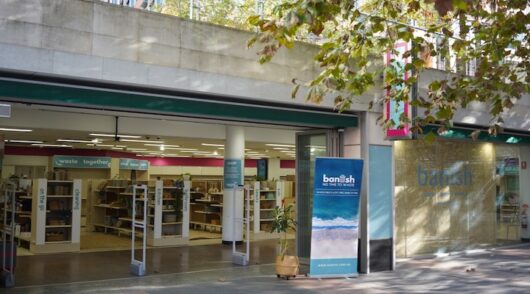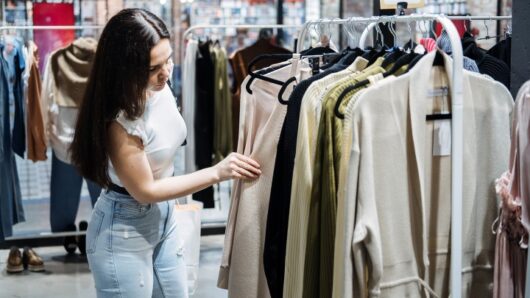Every day more Chinese consumers enter the middle class. How are – and can – western retailers share the new wealth?
The president of Louis Vuitton’s China operations Christopher Zanardi-Landi describes his challenge succinctly: “You have a tsunami of people who are entering into the world of luxury for the first time.
“So you have to find your way to cater to all the different groups of customers as they visit you. That’s the challenge.”
It’s a challenge facing every branded retailer in modern day China.
Granted, the growth initially came from a low base as China’s leadership recognised back in 1978 that economic reform of its pure communist system was essential for the nation’s future. But few are questioning the country’s ability to continue to grow at such a pace in the foreseeable future.
The government been pursuing ‘programmed urbanisation’ of its largely peasant population on a scale never seen anywhere else in the world. So far it’s moved 500 million into urban cities, driving fierce growth in construction and infrastructure. That process still has 20 years and as many as a further 500 million people left to run.
“This story has a long way to go yet, still at a high rate of growth,” says Wright. “What you’ve seen so far is only the beginning.”
The result is a consumer market with rich pickings for retailers – and exporters.
“China is the sort of market where you can sell anything once. It’s quite simple to find someone here who will give your product a run. If it doesn’t sell, they’ll drop you. They’re very pragmatic,” says Wright.
Rarely in overseas markets can a supplier get such a rapid reaction to the receptivity of a product.
“If you’re successful here, the upside is dramatic.”
Douglas Benjamin, director of Singapore-based luxury brand owner and rights holder FJ Benjamin, is equally bullish about the mainland Chinese opportunity.
“China is going to be a huge part of our retail business in the next few decades. What’s happening in China is mindblowing, but you have to be careful as there are many horror stories of retailers and brands who have gone into China and lost a lot of money. It’s a very expensive market to commit to and once committed you have to follow through. You can’t back out and come back in again.”
Back at Louis Vuitton’s elegant new 1200sqm flagship store in the heart of the Pudong financial district, Zanardi-Landi is having little difficulty keeping China’s newly affluent consumers satisfied.
Inside Retailing has learnt his latest store - the city’s third and one of two opened in Shanghai on April 28 2010, three days before World Expo began - hosts 600 to 800 customers a day and boasts a conversion rate of seven per cent. Few customers would spend less than several hundred dollars a visit. A huge proportion would spend more than $1000.
Chanel, Fendi, Prada, Dior and many more - all the big names in luxury goods are in China now and Louis Vuitton is all too well aware it cannot rely on its name along to succeed in a surprisingly discerning - and demanding - market.
“China has become the battlefield of the luxury industry,” explains Zanardi-Landi.
A small group of brands have been here for a long time and offering consistent standards of stock and service.
Others have been here several years, but not really focused on the market - now they are very focused, he says.
Others are newcomers, some learning harsh lessons for failing to research the market properly and meeting Chinese consumers’ increasingly discerning choice.
The amount of money spent on luxury goods has gone vertical in the last two years, but if you’re going to enter the market, he advises, you have to do it well from the very beginning.
“The barriers to entry are quite high. It’s a market where you come with a brand - if you take the view of well, I don’t really want to invest a lot I just want to test the waters, so I’ll have a franchisee and I’ll build a store and I’ll put it on the first floor of a shopping centre and we’ll see how we go - well, you’ll be dead before you start.”

That’s because the Chinese will take notice of the physical strength of the brand. You have to be in the best shopping centre, you have to have a prime location and you have to do everything right from the very beginning.
Chinese consumers have an inbuilt view that everything outside China is better.
“So it doesn’t matter what you build, the view is that it must be better outside, particularly when it comes to choice,” says Zanardi-Landi.
Price is not an issue - Chinese luxury goods purchasers know it is going to be more expensive at home due to import duties and VAT.
“But in terms of choice, they assume that the offer must be better in Hong Kong and it must be better in Paris. It takes a long time to convince consumers that what you’re doing here is as goo d and (the new lines) are coming as quickly and that they have the same amount of choice they have on the outside.
“The problem you have here is that there are a lot of new entrants coming to the market, constantly reinforcing that misconception.
“They’re not thinking of distribution or quality. They’re often using it as a dumping ground for old product. They’re probably investing hardly anything in training, so the experience is not as good (in China) as it is outside, even though it is new.”
Compounding that is the fact both China’s rich and its middle class are travelling in unprecedented numbers, whether on short stays in the casinos of Macao or Singapore, shopping trips to Hong Kong or travel for business or holidays in Europe. Zanardi-Landi says Louis Vuitton has noticed a huge increase in the number of Chinese shopping in Paris - not just in its own stores, but in its rivals’ too.
“For us, the Louis Vuitton approach has always been the same. We have 460 stores worldwide. We own and
operate them all and we want to make sure we have a very consistent approach wherever we go. The products you see here are the same as you’ll see in Paris right now. In fact I dare say you have a slightly wider choice of products here right now because we’re having a worldwide stock shortage.”
The strategy is working, he says, with customer loyalty in the China stores noticeably building.
While Chinese consumers may not necessarily trust foreign brands to present the same level of choice in China as in markets closer to home, foreign brands have an edge over local names: they’re aspirational by nature because it is a badge of success and sophistication to be seen wearing an off-shore brand.
“I don’t see Chinese luxury brands taking off any time soon because the Chinese consumers are concerned about the history and heritage of your brands,” explains Anson Bailey, principal, business development, with KPMG’s China consumer division.
“They’re part of the reason people buy a brand.”
He says in time China will compete, but it will take a while for them to resonate with China’s rising middle class.
Offshore brands - both luxury and those of a more mainstream nature like Nike or Esprit - are well-known amongst their target audience.
“Chinese consumers are very wired. They’re chatting on the internet, browsing the web. We’re already seeing the rise of the sophisticated consumer inside China. They’re doing their homework,” says Bailey.
Consumers like those are the ones who’ll be shopping in one of Zanardi-Landi’s store sometime in the next decade, if they’re not already. Part of that tsunami.
And, yes: Zanardi-Landi concedes having a tsunami of customers is a great problem to have.
“It’s a positive challenge.”
This feature first appeared in Inside Retailing Magazine. Click here to subscribe.






